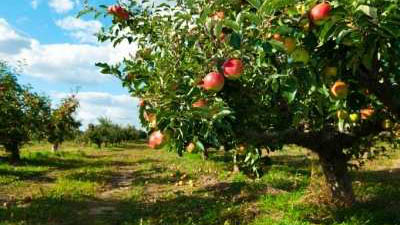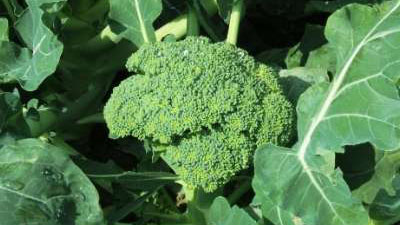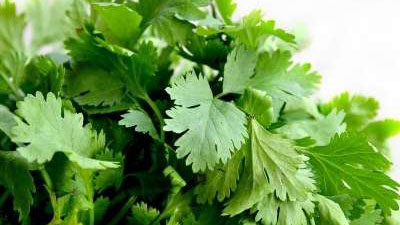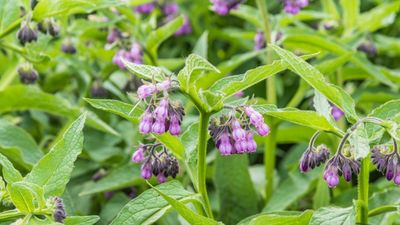How to Grow Tomatillos in Your Garden
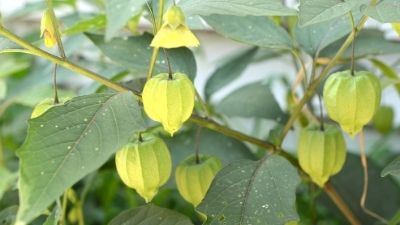
Summary
Tomatillos are easy to grow and have a tangy, citrus flavor that is slightly acidic. Green or purple fruits are encased in a papery husk. The plants require little maintenance or effort to produce high yield. They prefer full sun and well-drained soils. Tomatillos are an indeterminate plant, meaning they will continue to flower and fruit until frost. Additional support will aid in the harvesting of fruit, limit their sprawling growing habit and hinder voluntary rooting of stems that come in contact with the ground. Tomatillos grow 3-4 feet tall and wide and rarely suffer from disease or pest damage. Plants can be started indoors, 6-8 weeks before planting date. Transplant or seed directly in the garden after danger of frost has passed. They are semi-drought tolerant, requiring 1-2 inches of water per week. Plant at least two tomatillo plants to achieve proper fertilization for fruit production.
Tomatillo Varieties
Tomatillo varieties can be categorized by fruit color. Green varieties include: Rendidora, (upright growth; high yields), Gigante, Tamayo, Toma Verde, and Gulliver Hybrid have more sprawling growth habits. Purple varieties include: Purple Coban, Purple De Milpa, and Purple Hybrid. When choosing varieties, consider your growing environment, primary use, and available gardening space. Most varieties will grow in Utah, but are not be available locally. Garden centers and nurseries typically provide a limited selection of varieties that have proven to do well in our location. It may be necessary to purchase seed and grow your own transplants to obtain a specific variety you want. Expect to begin harvesting fruit about 60- 75 days from transplanting.
How to Grow Tomatillos
Soil
Tomatillos need well-drained soil and do poorly in heavy, wet soils. If planting in an area that does not drain well, plant in a raised bed. Tomatillos also do very well in containers.
Soil Preparation
Choose a site in your garden that receives full sun. Before planting, determine fertilizer needs with a soil test, then follow the recommendations given with the test report. If fertilizer applications are warranted, work the fertilizer into the top 6 inches of soil. If you fertilize with compost, apply no more than 1 inch of well-composted organic matter per 100 square feet of garden area. Tomatillos grow to 3-4 feet tall and wide, so plan accordingly. You can pinch off the growing tips to limit spread if space is a concern.
Plants
Allow six to eight weeks to grow transplants. Plants should have five to seven leaves and a well-developed root system before planting. Germinate seeds at 80°F until the seed root emerges, then plant to sterile seeding mix and grow out at 65-70°F. Good light is essential to produce quality transplants. Cool white fluorescent tubes, 2-3 inches above the plants, lit for 14-16 hours per day, will ensure plants grow big and healthy. Water regularly and feed weekly with half-strength, soluble, complete fertilizer before planting into the garden. Transplants mature four to five weeks before seeded tomatillos and are recommended for most areas in Utah. Since tomatillos are not self-fruitful, always plant at least two tomatillo plants (same or different varieties).
Planting and Spacing
Plant tomatillos when soils are warmer than 60℉ or after the frost danger has passed. Seeds can be planted directly in the garden two weeks before the last frost. Plant four to six seeds ½-inch deep in hills, 24-36 inches apart with rows spaced 36 inches apart.
After seedlings have two leaves, thin to one to two plants per hill. Transplants should be planted 2 feet apart in rows spaced 3 feet apart. Transplants that are stocky, dark green, have five to seven leaves and 6-10 inches tall grow most rapidly. Plants with flowers or fruits establish slowly and yield poorly. If plants are tall, they can be planted deeper as tomatillos form roots from their stems like tomatoes.
Mulch
Black plastic mulch warms the soil, conserves water and helps to control weeds. Plastic mulches allow earlier planting and maturity, especially with transplants. After laying out the mulch, secure the edges with soil and cut holes for seeds or transplants. Plant two weeks before the last frost date if using plastic mulch.
Row Covers
Row covers enhance growth and earliness. Hotcaps, plastic tunnels, fabric covers and other devices help protect seedlings and transplants from cool air temperatures. Plants grown under row covers require ventilation when the air temperature inside the covers exceeds 80°F to avoid damage to flowers and setting fruits. Cut a flap between each plant in the top of the row cover to allow the hot air to escape. Remove covers when weather has stabilized.
Irrigation
Water tomatillos deeply and infrequently, applying 1-2 inches of water per week. Mulch around the plants will help conserve soil moisture. Sprinkle irrigate in the morning to allow the foliage dry out before night- fall. Using drip irrigation will keep water off of foliage and reduce the risk of disease. Tomatillos are moderately drought tolerant so don’t over-water.
Fertilizer
Avoid over-fertilizing tomatillos, which causes excess leaf growth and delays fruit set and maturity. Side dress each plant with 1 tablespoon of (21-0-0) fertilizer, sprinkled around the plants at four and eight weeks after transplanting, then water in the fertilizer.
Trellis
Tomatillos have an indeterminate, sprawling growth habit and benefit from staking or caging plants to keep fruit off the ground and improve air circulation through the plant. Drive a 48-inch stake 18 inches into the soil adjacent to the plant stem. Tie the plant to the stake. Additional tying will be needed as the plant grows. Tomato cages are also a good way to support tomatillos. Tomatillos weigh less than tomato plants, and therefore, can be supported much easier. Support can alleviate diseases and limit snail and slug damage.
Maintenance
Tomatillo stems voluntarily root if they come in contact with soil. Keep plants supported with stakes or cages to alleviate a spreading plant. You can pinch off growing shoot tips to limit their spread if space is a concern. Harvest fruit as they mature and remove excess fruit at the end of the season to avoid volunteer plants the following spring. To inhibit disease, be sure to rotate the crop placement in your garden every year.
Problems with Growing Tomatillos
Weeds
Plastic and organic mulches (straw, leaves and grass clippings) effectively control weeds. Healthy vigorous plants outcompete weeds, once they are established. Cultivate shallowly to avoid root damage if weeds are a problem. Volunteer tomatillo plants may create a weed issue in future years if fruit is not removed from the garden.
Insects and Diseases
Tomatillos are naturally resistant to most diseases and pests. Early detection will help alleviate crop damage if problems should arise. See the following pest chart. Most insect damage will be to the leaves; the papery husk protects the fruit from pests.
| Disease | Identification | Control |
|---|---|---|
| Powdery Mildew | White fungal patches that grow first on older leaves. The disease eventually spreads to all plant parts and kills the foliage. | Use stakes or cages to improve air circulation. Keep foliage dry particularly late in the growing season. Use an approved fungicide. |
| Various viruses | Leaves are light green, mottled, malformed, dwarfed and curled. Early infection affects fruit shape and flavor. Viruses are transmitted by aphids and leafhoppers. | Control insects and destroy infected plants. |
| Root rots | Plants grow poorly and may wilt even when watered regularly. | Don’t over-water or grow where soils stay wet long after the irrigation is over. |
| Insect | Identification | Control |
|---|---|---|
| Aphids | Green or black soft-bodied insects that feed on underside of leaves. Leaves become crinkled and curled. May transmit virus diseases. Plants appear shiny, wet or sticky from insect secretions. | Use insecticidal soaps or strong water stream to dislodge insects. |
| Flea Beetles | Small black beetles that feed on seedlings. Adults chew tiny holes in cotyledons and leaves. Beetles can reduce plant vigor or may kill seedlings. | Control beetles with insecticide dust at seeding or transplanting. |
How to Harvest and Store Tomatillos
Tomatillos are ripe when the fruit is firm and fills the papery husk. If green fruit turns yellow, it is overripe and less flavorful. The purple varieties are ripe when the green fruits turn purple and fill the husk. Fruit become soft when overripe. Tomatillo fruit often drop off the plant before they ripen. Gather these fruits and store in their husks until fully ripe. Since tomatillos are indeterminate, they flower and fruit until frost. At the end of the season, pull up the whole plant and hang upside down in an unheated garage or storage area. Fruit on the vines will store for several months. You can also pick fruits and store like green tomatoes. For eating, pick mature fruit and store in the husk in a paper bag in the refrigerator for up to three weeks. Fruits inside the husk are very sticky, so wash completely before eating or freezing. To freeze, remove the husk, wash and dry and place in plastic bags in the freezer. Eat or prepare the fruit whole, as no peeling, coring or seeding is required.
Tomatillo Plant Productivity
Each plant will yield 2-3 pounds of fruit. Plant two to three plants for fresh use and additional plants for freezing and canning.
Tomatillo Nutrition Facts
Tomatillos are an excellent source of vitamins C and K, iron, magnesium, phosphorus and copper. They are a very good source of dietary fiber and are rich in niacin, potassium, and manganese.
Frequently Asked Questions
Why do I get so many empty husks on my tomatillo plants?
Tomatillos are not self-fertile so multiple plants are needed for proper fruit set. Also, extreme temperatures and dry conditions can affect flower fertilization. Bees and other insects are needed to pollinate the flowers.
Are tomatillos green tomatoes?
No, they are related to tomatoes, but they have their own distinct flavor and texture. Tomatillos are not self-fertile like tomatoes, and all varieties are indeterminate. In contrast, tomatoes have varieties that are both indeterminate and determinate.
Can I substitute green tomatoes for tomatillos in recipes?
No, not if you want the authentic flavor of the dish. Tomatillos do not have the juice, texture, or flavor of tomatoes.
What are the uses for tomatillos?
Tomatillos are commonly used in salsa verde. They produce a tangy, citrusy sauce that can be used fresh, canned, or frozen. Don’t stop there, however. You can add them to soups, stews, meat dishes, and more, just like tomatoes.
References
- Morton, J. (2011). Mexican husk tomato. Center for New Crops and Plants. Purdue University. https://hort.purdue.edu/newcrop/morton/mexica n_husk_tomato.html
- Everhart, E., Haynes, C. & Jauron, R. (2003).Tomatillos. Iowa State University Horticulture Guide Home Gardening. https://store.extension.iastate.edu/Product/Tom atillos
- Smith, R., Jimenez, M. & Cantwell, M. (1999). Tomatillo production in California. University of California. http://anrcatalog.ucanr.edu/pdf/7246.pdf
View En Espanol
Published April 2020
Utah State University Extension
Peer-reviewed fact sheet
Download PDF
Authors
Kristiane Pedersen and Dan Drost
Related Research



